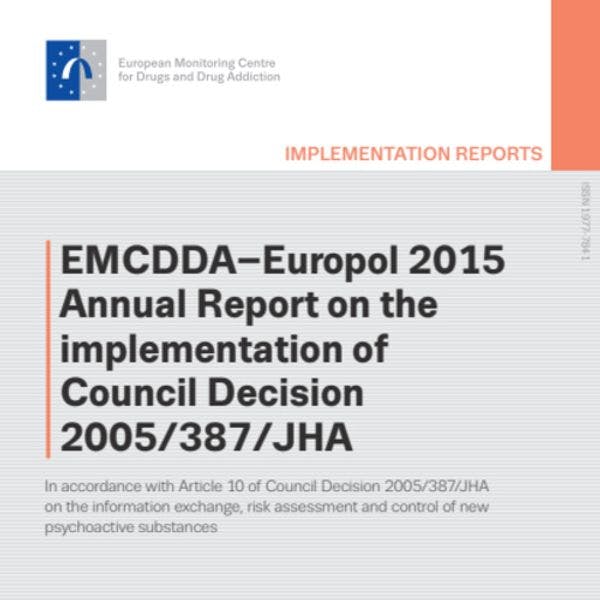EMCDDA- Europol 2015 annual report on the implementation of council decision 2005/387/JHA
As part of the response to new psychoactive substances within the European Union (EU), the Council Decision 2005/387/JHA of 10 May 2005 on the information exchange, risk assessment and control of new psychoactive substances (hereafter the ‘Council Decision’) established a mechanism for rapid information exchange on substances that may pose public health and social threats, including the involvement of organised crime. This provides a legal basis for the institutions of the EU and the Member States to monitor all new narcotic and psychotropic substances that appear on the European drug scene. Where necessary, the Council Decision also provides for an assessment of the risks associated with these new substances, so that control measures deriving from Member States’ obligations to the United Nations drug control conventions can also be applied to new psychoactive substances.
Under Article 4 of the Council Decision, the EMCDDA and Europol, in close collaboration with their respective expert networks, the Reitox National Focal Points and Europol National Units, are assigned a central role in detecting, notifying and monitoring new psychoactive substances. The information exchange element of the Council Decision has been implemented by the EMCDDA and Europol as the European Union Early Warning System on New Psychoactive Substances (hereafter ‘EU Early Warning System’). In addition, where necessary, and in cooperation with the European Medicines Agency (EMA), the EMCDDA and Europol may collect, analyse and present information on a new psychoactive substance in the form of a Joint Report (Article 5). This report provides evidence to the Council of the European Union and the European Commission on the need to request a risk assessment on a new psychoactive substance. Such a risk assessment examines the health and social risks posed by a new substance including: the use of, manufacture of, and, traffic in, a new psychoactive substance; the involvement of organised crime; and, the possible consequences of control measures. In order to conduct the risk assessment, the EMCDDA convenes a special meeting under the auspices of its Scientific Committee, extended with additional experts as necessary (Article 6).
Keep up-to-date with drug policy developments by subscribing to the IDPC Monthly Alert.
